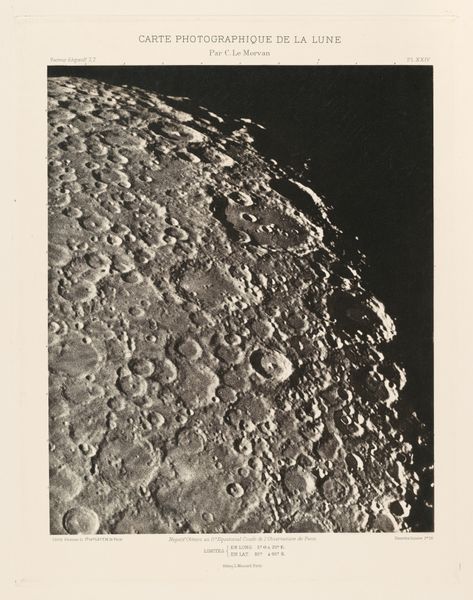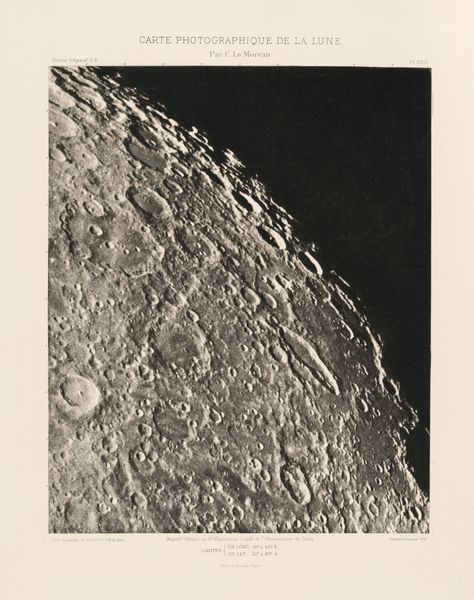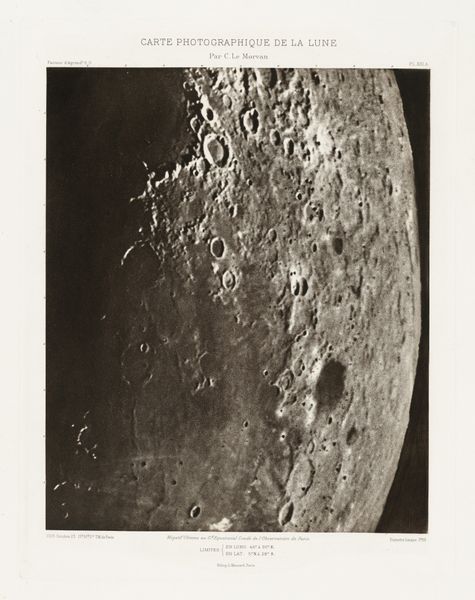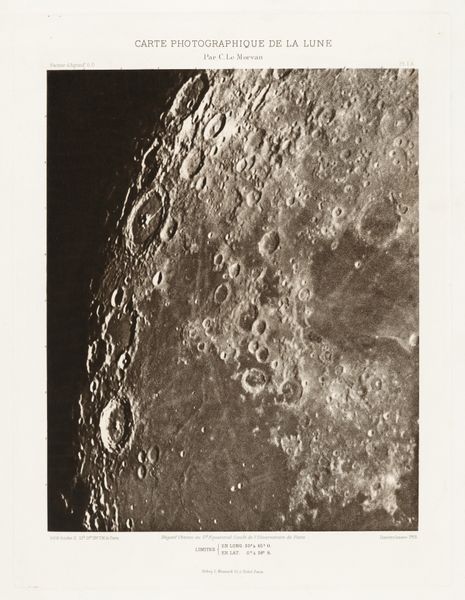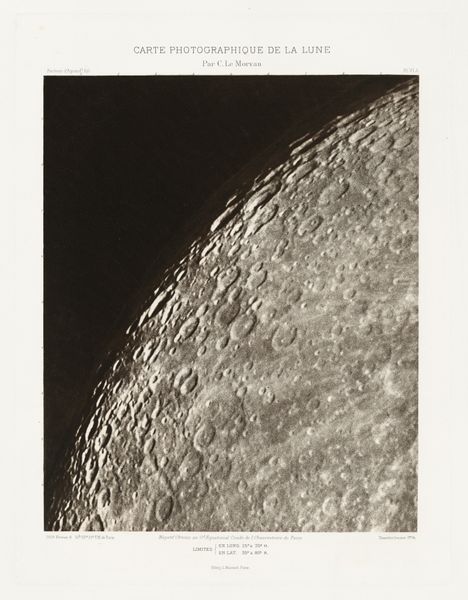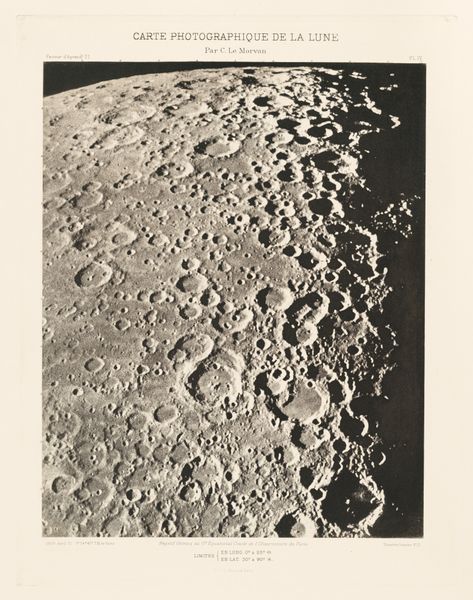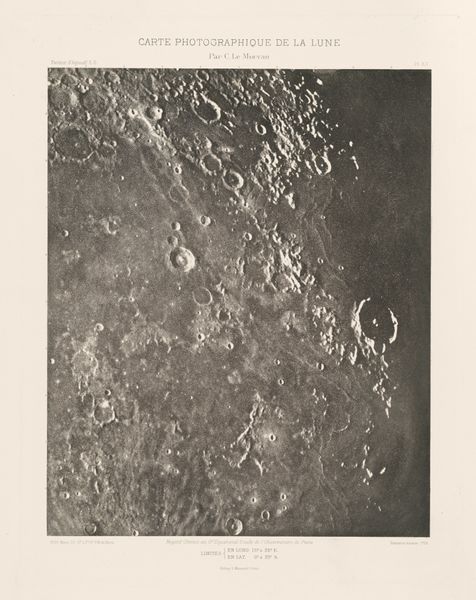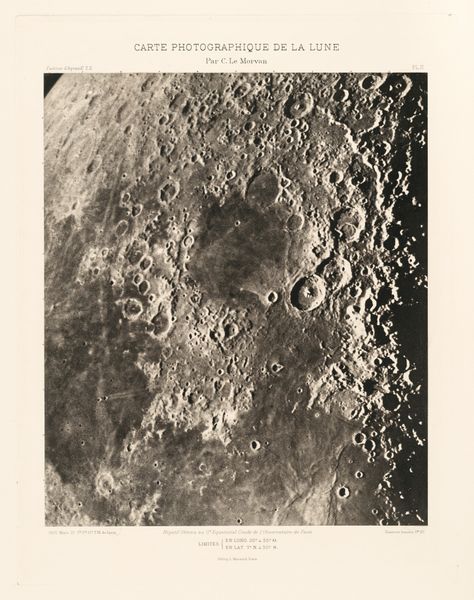
Carte photographique de la lune, planche XXI (Photographic Chart of the Moon, plate XXI) Possibly 1904 - 1914
0:00
0:00
print, photography, gelatin-silver-print
# print
#
landscape
#
photography
#
geometric
#
gelatin-silver-print
Dimensions: image: 31.1 × 25.5 cm (12 1/4 × 10 1/16 in.) plate: 38.9 × 29.5 cm (15 5/16 × 11 5/8 in.) sheet: 49 × 37.9 cm (19 5/16 × 14 15/16 in.) tissue: 42.55 × 37.47 cm (16 3/4 × 14 3/4 in.)
Copyright: National Gallery of Art: CC0 1.0
Charles Le Morvan made this photographic chart of the moon sometime around the turn of the 20th century, using a process rooted in light and time. The image feels both scientific and deeply poetic, like a dreamscape rendered in shades of gray. Look at the way the light catches the craters, each one a tiny world of texture and shadow. It’s amazing to think of Le Morvan, patiently capturing this celestial body with the technology of his time. There’s this particular crater, near the top edge, that just grabs my attention. It's so clearly defined. I can almost feel the dust and the silence of that place. You can see that he’s been economical in his use of light to create the image. It reminds me a little of Vija Celmins' meticulous drawings of the night sky or ocean surfaces. Both artists share a fascination with rendering vast, unknowable spaces through careful, almost obsessive mark-making. It’s a reminder that art, like science, is about asking questions and embracing the mystery of the universe.
Comments
No comments
Be the first to comment and join the conversation on the ultimate creative platform.

